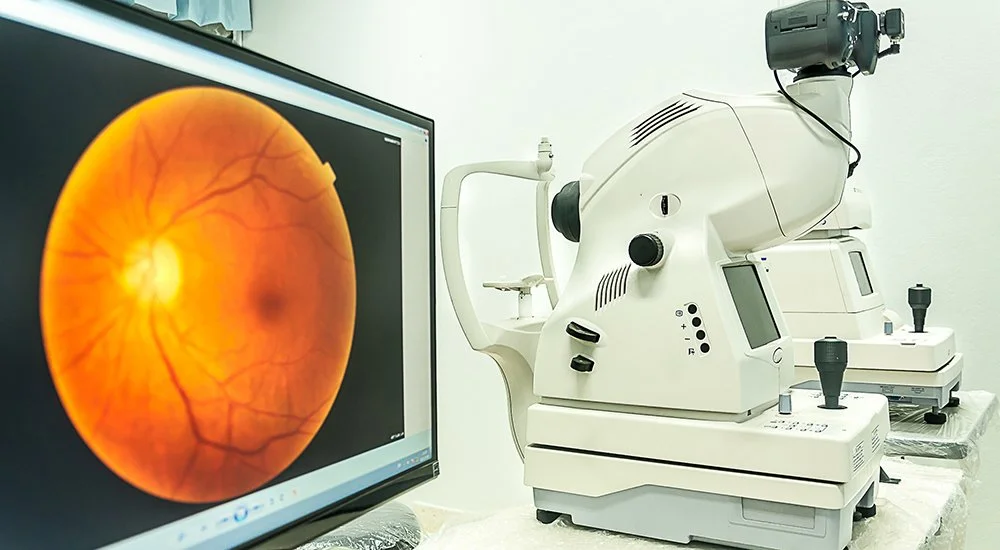How to Avoid 3 Common Optometric Billing Rejections and Denials
/Optometric billing rejections and denials can be a nightmare for eye care providers. They delay payments and affect cash flow. Working with hundreds of eye care providers nationwide, our Fast Pay Health optometric billing consultants have seen rejections and denials that providers could easily avoid.
This blog will explore three common reasons for medical billing rejections and denials and offer actionable insights on how to avoid them.
1. OCT/GDX and fundus photography
When billing OCT/GDX and fundus photography together for a Medicare patient, it is crucial to follow updated coding rules. For example:
Review Medicare and insurance company policies.
Always check with your area’s Medicare carrier or other insurance company policies for up-to-date coding rules—they can change as frequently as every quarter.
Payer Listserv Updates (subscribe to receive updates)
Code correctly so you get paid.
On the same visit, many offices bill an OCT/GDX (CPT® codes 92133/92134) and fundus photography (CPT® code 92250). If you do not code this correctly, Medicare may deny both codes or only allow payment on the code with the lowest reimbursement.
If you look at a single problem like glaucoma, both tests cannot be paid per Medicare’s NCCI edits; codes 92133/92134 and 92250 are mutually exclusive.
Use Modifier 59 correctly to avoid audits and fines.
It's not uncommon for practices to misuse medical billing modifiers frequently. Did you know you might be expected to return money that insurance or third-party payers paid you if you misused a modifier?
For example, some offices attempt to use Modifier 59 to get paid for both OCT/GDX and fundus photography. However, Modifier 59 is one of the most used—often incorrectly. Misusing it may lead to a Medicare audit and possible fines, so use it wisely.
Here are a few pro tips to consider.
Modifier 59 defines a “Distinct Procedure Service” and identifies procedures or services that are not normally reported together.
Though the NCCI edits allow Modifier 59, determining if it is appropriate under the circumstances can be tricky.
Never attach Modifier 59 to an E/M service.
Depending on the local policy, if the tests are necessary due to two separately identifiable conditions, you may be able to link the appropriate diagnosis code to each CPT® and add Modifier 59 to the second procedure.
Keeping up with Local Coverage Determinations (LCD) for your area is important to ensure you apply the correct codes.
“An optometric billing service is pivotal in reducing accounts receivable (AR) and improving cash flow stability. Claims are now processed faster, which means we get paid more quickly. Our net collections increased by over 90% in the first few months.” –Taylor Tedder, OD (President of Opticore Optometry Group)
2. Referring physicians on ophthalmic tests for Medicare
Many codes require a referring or ordering physician in order to process the claim. These include pachymetry, fundus photos, and OCT.
Determine if it is a referring or rendering physician.
In most cases, the referring or ordering physician may be the same as the rendering physician. However, failure to include this information with the claim will result in a denial and delay in payment.
Confirm if you need a referral (written order) from the patient’s primary care provider and that the referral number on the claim is correct.
Medicare often splits codes off from the rest of a claim to process codes. For example, this is often seen with pachymetry when billed concurrently with an exam. Medicare will split off the pachymetry to return a denial for missing the referring physician while separately processing and paying for the exam.
Scrub your claims to avoid delays in reimbursements.
The best practice management systems include features supporting claim scrubbing edits that alert you to a missing referring or ordering physician. These alerts are necessary for claims to be sent to insurance companies with errors, causing rejections and costly delays in reimbursements.
Making sure claims are sent correctly from the start greatly reduces your accounts receivable—and saves you time. This is especially important if you have a pay-per-claim plan with your clearinghouse.
3. When is a patient new or established?
One surprisingly common rejection is when practices incorrectly identify whether a patient is new or established. Billing a new patient exam code for a patient who doesn't meet the criteria can lead to rejections.
A patient is considered new if they have not been seen by any physician with the same specialty and sub-specialty within a group practice in the last three years.
For solo providers, this is simple—if the patient hasn’t been seen in the last three years, they’re considered new. However, for larger group practices, it can get tricky. Keeping proper records can help avoid this type of rejection.
Sometimes, an insurance payer may incorrectly reject a claim for a new patient exam. Most of the time, this can be cleared up with a phone call to the payer, though some cases may require an appeal with medical documentation.
Invest in a solid claims optometry and ophthalmology denial management solution
The best billing and revenue cycle management solutions pay close attention to credentialing, eligibility verification, charge entry, coding, and claim submission requirements before you push the “Send” button. This proactive process decreases claim denials and delivers consistent and positive cash flow for your practice.
Fast Pay Health billers are experts at ensuring your claims are clean and error-free. We double-check and scrub every claim before we submit them. As a result, you avoid payment delays, a key benefit of using a billing service.
Book a free RCM practice analysis today to see how we help you get paid faster and reduce the accounts receivable cycle. Let us handle the billing hassles so you have more time with your patients.



